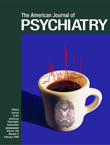Ronald Pies has written a handbook of psychopharmacology that should please busy psychiatrists, who want quick answers, as well as those who would like more detail. He successfully walks the line between a presentation that is too simple and avoids controversial issues and a detailed presentation that marshals and critically analyzes the data in numbing profuseness. He has a unique strategy. Each chapter (covering antidepressants, antipsychotics, anxiolytics/sedatives, and mood stabilizers) starts with an overview covering, very briefly, topics such as indications, mechanisms of action, pharmacokinetics, side effects, interactions, potentiating maneuvers, and use in special populations. Following this he presents tables reviewing the same material in more detail. Then a question and answer format provides excellent and concise answers to pertinent questions. Finally, and most enjoyable, he has a set of “vignettes and puzzles” (e.g., a woman in good control of panic disorder with 0.5 mg of alprazolam t.i.d. adds carbamazepine for trigeminal neuralgia and has increased anxiety: why?).
Psychopharmacology texts have unavoidable drawbacks: 1) by the time a text is written and published, significant new information has appeared, 2) medical students may find it too difficult, and experienced clinicians may find it too simple, 3) some important topics do not lend themselves to neat summary without considerable distortion, and 4) the reader who wants to dip in to find specific information (“in what doses does that drug come?”) appreciates a different format from the reader who wants a comprehensive narrative that includes subtleties. This volume does an excellent job of meeting these problems. The “dipper” can go right to the tables; the reader who wants more depth gets a sustained and focused discussion of these tables.
I especially appreciated Dr. Pies’s attention to issues that some texts neglect, such as the embarrassing lack of pivotal data about what to do when initial treatments do not work. He does not hesitate to give specific advice and yet, accurately, mentions the lack of definitive answers. An example of his different levels of approach is in a summary table, where he says that adding sympathomimetic agents, such as amphetamines, to a monoamine oxidase inhibitor (MAOI) has a risk of hypertension. Later (p. 79), under drug-drug interactions, he mentions, while listing risks of adding amphetamines (and tricyclic antidepressants) to an MAOI, that these combinations may merit use in refractory cases. Later, under “potentiating maneuvers,” he goes into more detail about these combinations and quotes relevant articles.
Of course, one may disagree with some of Dr. Pies’s assertions and omissions. Any reduction of a tremendous amount of information will not please everyone. This slim volume makes no attempt to review psychopharmacology comprehensively (for example, aggressive disorders and attention deficit hyperactivity disorder get fleeting attention). I recommend this book enthusiastically.

